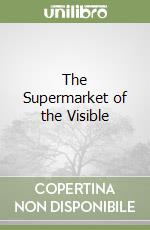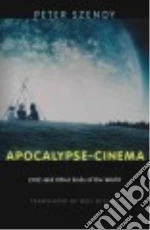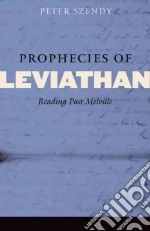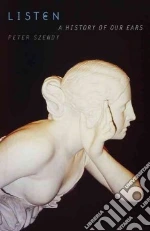 Libri di Peter Szendy su Unilibro.it) Libri di Peter Szendy su Unilibro.it)
|
|
2023 |
 Title :
Kant e gli extraterrestri. Cosmopolitica e vite interstellari
Title :
Kant e gli extraterrestri. Cosmopolitica e vite interstellariAuthor: Szendy Peter Publisher: Luiss University Press Cosa c'è di più sublime della Terra vista dal cielo? Un pensiero del genere deve aver attraversato anche la mente di Immanuel Kant, che alle forme di vita extraterrestri dedicò pagine tanto enigmatiche quanto evocative. Vero pensatore del limite, Kant intuiva che, per comprendere il nostro mondo e le nostre vite sarebbe stato necessario assumere un punto di vista del tutto alieno. In questo libro, Peter Szendy si chiede se, in un'epoca in cui il turismo cosmico e le conquiste dello spazio sono a un passo dall'essere realtà, non abbia senso riscoprire quell'antico punto di vista e provare a utilizzarlo per decifrare e comprendere la nostra esistenza in comune. € 20,00
Scontato: € 19,00
|
|
|
1919 |
 Title :
The Supermarket of the Visible
Title :
The Supermarket of the VisibleAuthor: Szendy Peter, Plug Jan (TRN) Publisher: Fordham Univ Pr € 28,10
|
|
|
1918 |
 Title :
Of Stigmatology
Title :
Of StigmatologyAuthor: Szendy Peter, Plug Jan (TRN) Publisher: Fordham Univ Pr € 79,20
|
 Title :
Of Stigmatology
Title :
Of StigmatologyAuthor: Szendy Peter, Plug Jan (TRN) Publisher: Fordham Univ Pr € 22,40
|
|
1916 |
 Title :
All Ears
Title :
All EarsAuthor: Szendy Peter, Vegso Roland (TRN) Publisher: Fordham Univ Pr € 26,60
|
 Title :
All Ears
Title :
All EarsAuthor: Szendy Peter, Vegso Roland (TRN) Publisher: Fordham Univ Pr € 100,90
|
|
1915 |
 Title :
Apocalypse-cinema
Title :
Apocalypse-cinemaAuthor: Szendy Peter, Bishop Will (TRN) Publisher: Fordham Univ Pr Apocalypse-cinema is not only the end of time that has so often been staged as spectacle in films like 2012,The Day After Tomorrow, and The Terminator. By looking at blockbusters that play with general annihilation while also paying close attention to films likeMelancholia, Cloverfield, Blade Runner, and Twelve Monkeys,this book suggests that in the apocalyptic genre, film gnaws at its own limit. Apocalypse-cinema is, at the same time and with the same double blow, the end of the world and the end of the film. It is the consummation and the (self-)consumption of cinema, in the form of an acinema that Lyotard evoked as the nihilistic horizon of filmic economy. The innumerable countdowns, dazzling radiations, freeze-overs, and seismic cracks and crevices are but other names and pretexts for staging film itself, with its economy of time and its rewinds, its overexposed images and fades to white, its freeze-frames and digital touch-ups. The apocalyptic genre is not just one genre among others: It plays with the very conditions of possibility of cinema.And it bears witness to the fact that, every time, in each and every film, what Jean-Luc Nancy called the cine-world is exposed on the verge of disappearing. In a Postface specially written for the English edition, Szendy extends his argument into a debate with speculative materialism. Apocalypse-cinema, he argues, announces itself as cinders that question the "ultratestimonial" structure of the filmic gaze. The cine-eye, he argues, eludes the correlationism and anthropomorphic structure that speculative materialists have placed under critique, allowing only the ashes it bears to be heard. € 35,10
|
|
|
1913 |
 Title :
Kant in the Land of Extraterrestrials
Title :
Kant in the Land of ExtraterrestrialsAuthor: Szendy Peter, Bishop Will (TRN) Publisher: Fordham Univ Pr € 33,00
|
|
|
1912 |
 Title :
Hits
Title :
HitsAuthor: Szendy Peter, Bishop Will (TRN) Publisher: Fordham Univ Pr € 100,90
|
|
|
1910 |
 Title :
Prophecies of Leviathan
Title :
Prophecies of LeviathanAuthor: Szendy Peter, Anidjar Gil (TRN) Publisher: Fordham Univ Pr Reading Melville is not only reading. Reading Melville means being already engaged in the abyssal process of reading reading. Reading what reading is and what reading does.With Melville, Prophecies of Leviathan argues that reading, beyond its apparent linearity, is essentially prophetic, not only because Moby Dick, for example, may appear to be full of unexpected prophecies (Ishmael seems to foretell a Grand Contested Election for the Presidency of the United Statesfollowed by a bloody battle in Afghanistan) but also, and more deeply, because reading itself is a prophetic experience that Melville captured in a unique way.Reading, according to Melville, might just be the prophecy of the text to come. This apparently tautological view has great consequences for the theory of literature and its relation to politics. As Szendy suggests, the beheading of Melville's Leviathan(which, Ishmael says, is the text) should be read against Hobbes's sovereign body politic. Szendy's reading of Melville urges us to revisit Jacques Derrida's all too famous sentence: There is no hors-texte.And it also urges us-as the preface to this English edition makes clear-to reflect on the (Christian) categories that we apply to the text: its life, death, and, above all, afterlife or suicide. The infinite finitude of the text: that is what reading is about.In his brilliant and thorough afterword, Gil Anidjar situates Prophecies of Leviathan among Szendy's other works and shows how the seemingly tautological self-prophecy really announces a new ipsology,a pluralization of the selfthrough a narcissism of the other thing. € 37,20
|
|
|
2009 |
 Title :
Tormentoni! La filosofia nel juke-box
Title :
Tormentoni! La filosofia nel juke-boxAuthor: Szendy Peter Publisher: I Libri di Isbn/Guidemoizzi Mina, Alberto Lupo e Walter Benjamin. Kierkegaard e i Daft Punk. Boris Vian. Nessuno può indovinare il segreto del successo di una canzone, la qualità che eleva musica e parole al titolo di "tormentone" (tube in francese) per accompagnare e persino infestare nei modi più diversi le nostre singole esistenze. Certamente è qualcosa che ha a che fare, paradossalmente, con la banalità, con la scambiabilità totale della musica popolare. Ma bisogna elevare le canzoni al rango di oggetti filosofici - sostiene il filosofo Peter Szendy rileggendo il Benjamin dei 'passages' - per capire che esse, proprio come il denaro per la merce e il desiderio, sono la moneta di scambio delle nostre emozioni. Per questo - come sosteneva Wittgenstein - le canzoni si incastrano nei nostri pensieri e sentimenti. E non ci lasciano più. "Tormentoni!" è la guida indispensabile per comprendere come alcune canzoni diventino parte della nostra cultura, delle nostre vite. Un saggio acuto e spiritoso sulla forma d'arte più popolare e universale: la musica. Peter Szendy (1966), filosofo e musicologo, è professore all'Università di Paris X Nanterre e consigliere della Cité de la Musique di Parigi. Ha pubblicato Musica pratica. Arrangements et phonographies de Monteverdi à James Brown (1997), Écoute. Une histoire de nos oreilles (2001). Recentemente ha curato una raccolta di scritti di Béla Bartok (2006). € 12,00
Scontato: € 11,40
|
|
|
2007 |
 Title :
Listen
Title :
ListenAuthor: Szendy Peter, Nancy Jean-Luc (FRW), Mandell Charlotte (TRN) Publisher: Fordham Univ Pr In this intimate meditation on listening, Peter Szendy examines what the role of the listener is, and has been, through the centuries. The role of the composer is clear, as is the role of the musician, but where exactly does the listener stand in relation to the music s/he listens to? What is the responsibility of the listener? Does a listener have any rights, as the author and composer have copyright? Szendy explains his love of musical arrangement (since arrangements allow him to listen to someone listening to music), and wonders whether it is possible in other ways to convey to others how we ourselves listen to music. How can we share our actual hearing with others?Along the way, he examines the evolution of copyright laws as applied to musical works and takes us into the courtroom to examine different debates on what we are and aren't allowed to listen to, and to witness the fine line between musical borrowing and outright plagiarism. Finally, he examines the recent phenomenon of DJs and digital compilations, and wonders how technology has affected our habits of listening and has changed listening from a passive exercise to an active one, whereby one can jump from track to track or play only selected pieces. € 37,20
|